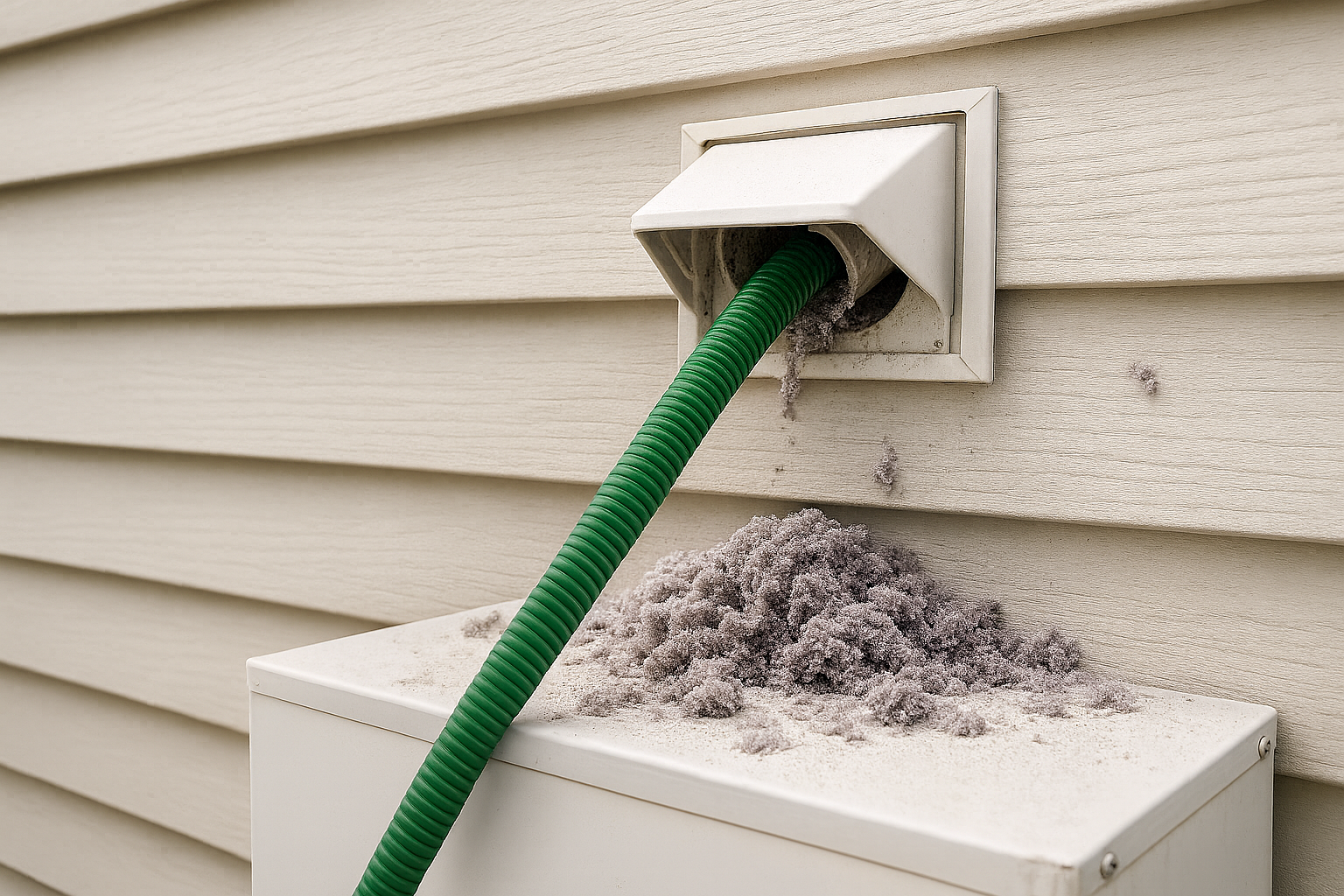Why Dryer Vent Cleaning Matters
Our vent cleaning service improves safety, efficiency, and air quality.
See also our full list of appliance repair services.
- Fire prevention: Lint is highly flammable. Poor airflow overheats the dryer and heater housing.
- Shorter dry times: Restored airflow means fewer cycles and less wear on clothing.
- Lower energy bills: Efficient exhaust reduces run time and electricity/gas usage.
- Longer appliance life: Proper ventilation protects motors, heating elements, fuses, and sensors.
- Better indoor air quality: Eliminates moisture and lint recirculation that can lead to odors and mold.
Warning Signs You Need Dryer Vent Cleaning
Signs you may need immediate vent cleaning include:
- Clothes take longer than one cycle to dry (especially towels/jeans).
- Dryer or laundry room feels unusually hot; burning or musty smell during a cycle.
- Excess lint around the door seal, behind the dryer, or on exterior vent hood.
- Exterior vent flap barely opens or has weak airflow when the dryer runs.
- Dryer automatically shuts off or shows error codes related to airflow/temperature.
- Visible lint buildup inside the flexible hose or wall connection.
For other issues like loud noises or heating failures, check our dryer repair page.
Common Dryer Vent Problems We Fix
- Heavy lint buildup in long or complex vent runs (attics, crawlspaces, multi-floor condos).
- Crushed or kinked hoses that choke airflow right behind the dryer.
- Improper vent materials (plastic or vinyl) that melt or trap lint — we replace with safe, code-compliant duct.
- Bird nests, pests, and debris in exterior hoods or roof vents.
- Disconnected or leaking joints that blow lint into walls/attics and reduce efficiency.
- Roof cap or wall hood failures — broken dampers that stick closed and cause overheating.
For more efficiency tips, visit Energy.gov.
Our Dryer Vent Cleaning Process in Orlando
We combine safety checks with high-power cleaning equipment for a thorough, end-to-end service:
- Safety inspection – Check gas/electric connections, look for burn marks, melted hoses, and code issues.
- Airflow & backpressure test – Measure baseline performance to identify severe restrictions.
- Mechanical brushing – Rotary brush system scrubs the full length of the duct; flexible shafts navigate elbows/long runs.
- High-CFM vacuum extraction – Industrial vacuums capture lint and debris while brushing to prevent indoor mess.
- Exterior hood/roof cap cleaning – Remove lint mats, free stuck dampers, and clear screens if present.
- Hose & connector service – Replace crushed, plastic, or excessively long hoses with rigid/semirigid duct and proper clamps.
- Final airflow verification – Re-test airflow/backpressure; show before/after results so you see the improvement.
Dryer Vent Repairs & Upgrades
- Duct replacement (rigid/semirigid metal) to meet safety codes and maximize airflow.
- Re-routing long or inefficient runs to reduce elbows and static pressure.
- New exterior hoods/roof caps with pest guards and free-moving dampers.
- High-temperature foil transitions to replace unsafe plastic/vinyl hoses.
- Sealing leaky joints with approved metal tape for airtight performance.
